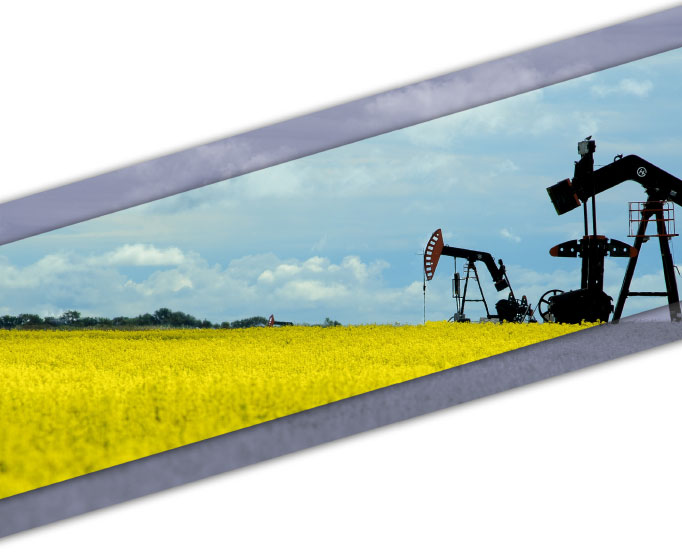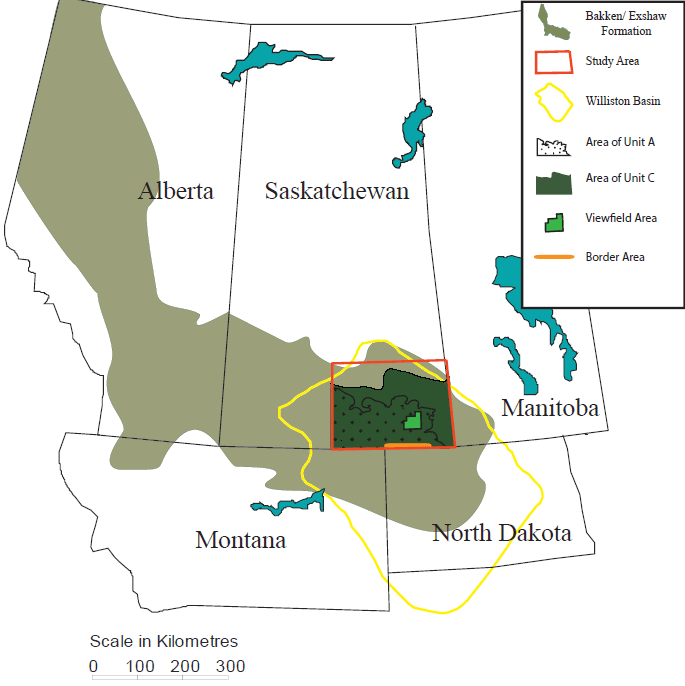ARCHIVED – ARCHIVED – The Ultimate Potential for Unconventional Petroleum from the Bakken Formation of Saskatchewan - Energy Briefing Note
This page has been archived on the Web
Information identified as archived is provided for reference, research or recordkeeping purposes. It is not subject to the Government of Canada Web Standards and has not been altered or updated since it was archived. Please contact us to request a format other than those available.

Energy Briefing Note
The Ultimate Potential for
Unconventional Petroleum from
the Bakken Formation of Saskatchewan


April 2015
Copyright/Permission to Reproduce
ISSN 1917-506X
Foreword
National Energy Board
The National Energy Board is an independent federal regulator established to promote safety and security, environmental protection and economic interest within the mandate set by Parliament for the regulation of pipelines, energy development and trade. The Board's main responsibilities include regulating the construction and operation of interprovincial and international oil and natural gas pipelines, international power lines, and designated interprovincial power lines.
For oil and natural gas exports, the Board’s role is to evaluate whether the oil and natural gas proposed to be exported is surplus to reasonably foreseeable Canadian requirements, having regard to the trends in the discovery of oil or gas in Canada.
If a party wishes to rely on material from this report in any regulatory proceeding before the Board, it may submit the material, just as it may submit any public document. Under these circumstances, the submitting party in effect adopts the material and could be required to answer questions pertaining to its content. This report does not provide an indication about whether any application will be approved or not. The Board will decide on specific applications based on the material in evidence before it at that time.
Saskatchewan Ministry of the Economy
Saskatchewan Ministry of the Economy was created in May 2012 to bring a sharper, more integrated approach to the province's economic growth. The ministry’s mission is to “advance economic growth to generate wealth and opportunity in Saskatchewan.”
It has three core lines of business:
- to advance and regulate responsible resource development
- to develop, attract and retain skilled workers
- to enhance economic growth and competitiveness in the province
The new structure brings together key economic levers – including labour market development and immigration, energy and resource management, and economic development including First Nations, Métis and northern economic development. This integration will help achieve the objectives laid out in the Saskatchewan Plan for Growth, released in October 2012.

Figure 1: Generalized map showing the location of the Bakken Formation with an outline of the study area.
Executive Summary
The marketable unconventional oil and natural gas potential of the Bakken Formation in Saskatchewan has been jointly evaluated by the National Energy Board and the Saskatchewan Ministry of the Economy. Located in the southeast corner of the province, the unconventional, marketable resources of the Bakken are expected to be 223 million m³ (1,401 million barrels) of marketable oil and 81.2 billion m³ (2.9 trillion cubic feet (Tcf)) of marketable natural gas.
Introduction
The Bakken Formation in Saskatchewan (Figure 1) has been producing from conventional reservoirs since the mid-1950s. Since 2004, however, industry has shifted its focus to its unconventional tight oil, primarily because the combination of horizontal drilling and multi-stage hydraulic fracturing has made it economic to develop.
For this study, the National Energy Board and the Saskatchewan Ministry of the Economy focused on the unconventional resources contained within the siltstones and fine-grained sandstones above and below the conventional sandstone reservoir found in the middle of the formation. Both the in-place and marketable volumesFootnote 1 for oil and natural gas were assessed. This is the first publicly released study to examine the marketable, unconventional oil and natural gas potential of the Bakken Formation in Saskatchewan.

Figure 2: Stratigraphic chart showing the type-section geological makeup of the Bakken Formation in Saskatchewan
Geological Description
The Bakken Formation was deposited about 360 million years ago as the Upper Devonian Period was ending and the Lower Mississippian Period was beginning. It has three members. The Upper and Lower Members are black, organic-rich shales that are generally 1 to 10 m thick. The Middle Bakken Member contains siltstones and sandstones and is further divided into Unit A at its bottom, Unit B in its middle, and Unit C at its top (Figure 2).Footnote 2,Footnote 3,Footnote 4
Unit A covers about 38,000 km² and is typically 1 to 12 m thick, thinning to zero at its northern and eastern edges. It is mostly a grey to greenish grey siltstone and is characterized by abundant bioturbation (i.e., ancient burrows and tracks left by marine animals that lived in or on the old sea bed) (Figure 3).Footnote 4,Footnote 5,Footnote 6 The amount of sand increases upward in Unit A until it becomes a silty sandstone near its top.
Unit B (Figure 3) is a fine-grained sandstone only found in certain places of the project area. It is generally less than 5 m thick, but in some locations is over 14 m thick. Unit B contains conventional oil in southeast Saskatchewan where a “trap” exists to hold that oil in place. Where it is present, conventional oil in Unit B can be produced with vertical wells.
Unit C is aerially more extensive, covering about 62,000 km². It has an average thickness of 3 m and thins to zero at its northern edge. It is recognized by laminated dolomitic siltstone and very fine grained sandstone. Bioturbation and other soft sediment deformation are very prevalent in Unit C (Figure 3). No oil well has been proven to produce solely from Unit C.

Figure 3. Units C, B and A of the Bakken Formation
Units A and C are considered to be unconventional reservoirs since they have extremely low permeability (less than one millidarcy) and require horizontally drilled wells in addition to high-energy stimulation to attain commercial oil production. Three zones were defined in units A and C for the assessment in this study:
- The ‘Viewfield zone’, where oil migrated into the area from the south and was trapped within low permeability siltstones and sandstones of Unit A. Currently, most unconventional oil production from the Bakken Formation in Saskatchewan comes from the Viewfield pool.
- The ‘Border Continuous zone’, where organic-rich shales at the top and bottom of the Bakken were heated enough to generate oil and now this oil is trapped within Bakken siltstones and sandstones over a wide geographic area.
- The ‘Transition zone’ where no established pools in the Bakken exist, but miscellaneous oil wells have been drilled. Migrated oil might be trapped within Bakken Formation siltstones and sandstones. Heat anomalies might be present and oil could have been generated locally in the Bakken’s organic-rich shales.
Methods
The methods used in this study are similar to those used in the 2013 study of the unconventional petroleum resources of the Montney Formation of British Columbia and Alberta.Footnote 7 In-place volumes of oil were calculated using a standard volumetric equation where the variables were determined from map grids of geological data. This allowed the model to reflect the changing characteristics of the reservoir over its geographic extent. Statistical distributions were then applied to some of the variables in the equations after which Monte Carlo simulations estimated low, expected and high values.Footnote 8 The model outputs a set of in-place and marketable volumes for oil and natural gas on a township basis.
The three geographic assessment zones split the Bakken into six assessment groupings, each with two stratigraphic units (A and C). The ultimate recovery varies widely between each of these assessment groups and, to a large extent, reflects their differences in geology and in the possibility of finding oil that can be produced. Areas outside the Viewfield zone for example, have been less prospective so far and the estimates of their potential recoveries are lower on a per township basis than in the other zones. The ultimate recovery of these less prospective areas within the Bakken could increase over time as more exploration occurs, leading to more discoveries and a better understanding of the geological setting of the zones.
Assessment Results and Observations
The ultimate potential for unconventional oil in the Bakken in Saskatchewan is considerable, with expected volumes of 223 million m³ (1,401 million barrels) of marketable oil (Table 1). The uncertainty in these estimates is represented by the range between the low and high estimated valuesFootnote 9.
| Oil - million m³ (million barrels) |
In-Place | Marketable | ||||
|---|---|---|---|---|---|---|
| Low | Expected | High | Low | Expected | High | |
| 8,420 (52,984) |
11,279 (70,970) |
14,627 (92,033) |
132 (835) |
223 (1,401) |
345 (2,173) |
|
Production from the Bakken Formation has been continuous in Saskatchewan, albeit at a smaller scale, since the mid-1950s when conventional resources were exploited. Then in 2004 unconventional oil began to receive attention and areas within the Viewfield zone were targeted. There is considerably more well data in the Viewfield zone, which in turn leads to a higher degree of confidence that the amount of oil produced by the play at the end of its productive life will be closer to the expected value (Table 2). The assessment of the Border Continuous zone and Transition zones are based on fewer well data and as such there is less certainty as to where within the range of low to high values the final production tally will fall.
| Oil – million m³ (million barrels) |
In-Place | Marketable | ||||
|---|---|---|---|---|---|---|
| Low | Expected | High | Low | Expected | High | |
| Viewfield | 838 (5,429) |
1,144 (7,200) |
1,487 (9,359) |
43 (273) |
74 (464) |
114 (717) |
| Border Continuous | 414 (2,604) |
573 (3,606) |
750 (4,717) |
22 (139) |
38 (240) |
61 (385) |
| Transition | 7,144 44,951 |
9,562 60,164 |
12,390 (77,957) |
67 (423) |
111 (697) |
170 (1,071) |
Each year, 3.5 million m³ (22 million barrels) of unconventional oil are produced from the Bakken in Saskatchewan. When considering cumulative production of 25 million m³ (160 million barrels) to year end 2014, there are 198 million m³ (1,241 million barrels) remaining. This does not take into account future improvements in drilling, production, or completion technologies which could further add to the recoverable resource base.
Though small in comparison to the oil resource of the Bakken, the amount of dissolved natural gas within the play was also assessed. The Bakken is expected to contain 82 billion m³ (2.89 Tcf) of marketable natural gas. (Table 3)
| Natural Gas - billion m³ (trillion cubic feet) |
In-Place | Marketable | ||||
|---|---|---|---|---|---|---|
| Low | Expected | High | Low | Expected | High | |
| 2,281 (81) |
3,041 (107) |
3,944 (139) |
48 (1.69) |
82 (2.89) |
128 (4.52) |
|
- Date modified:
